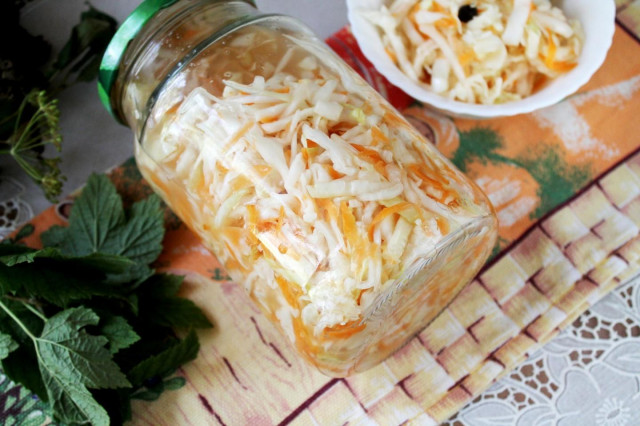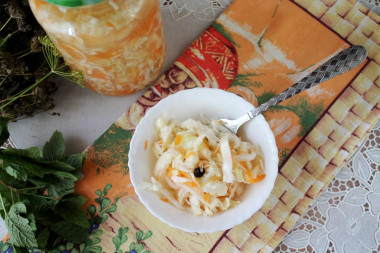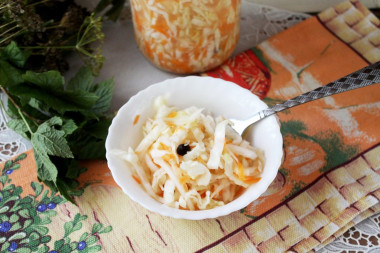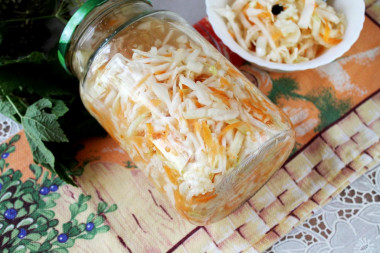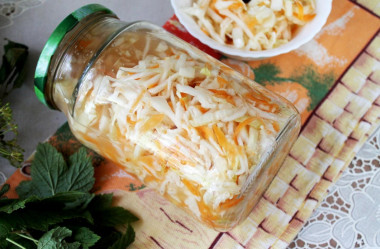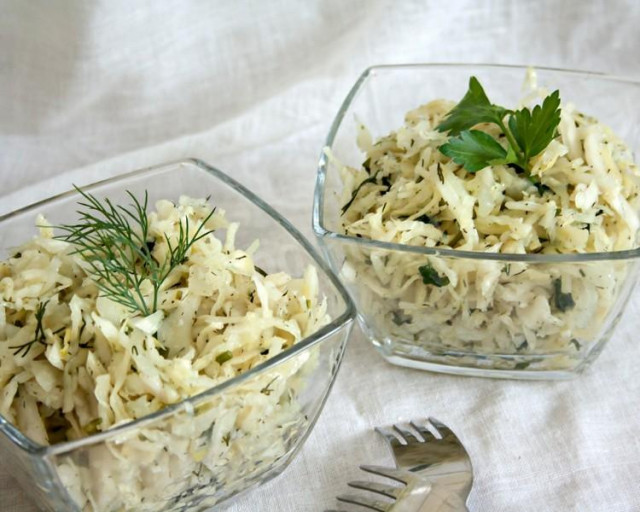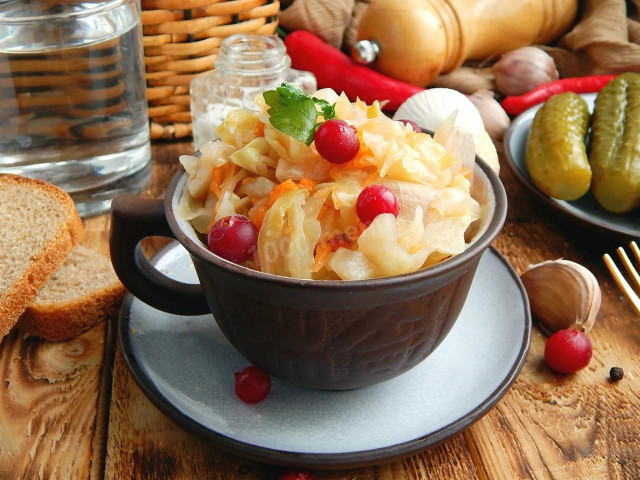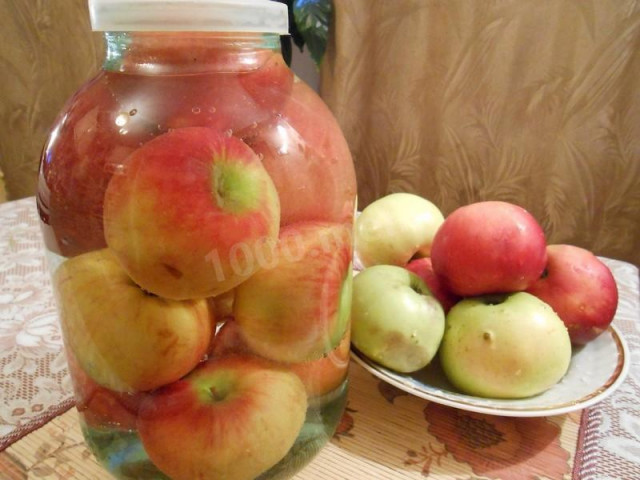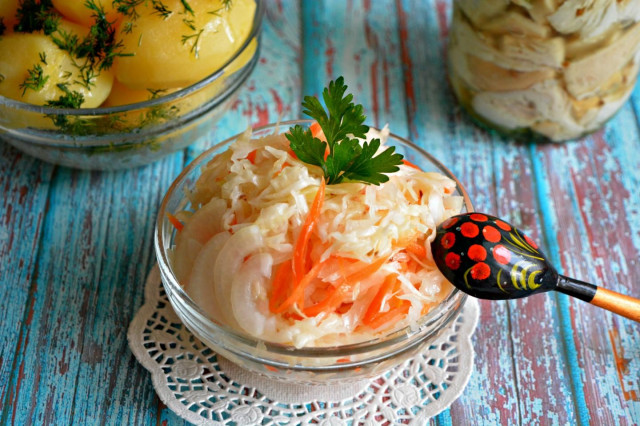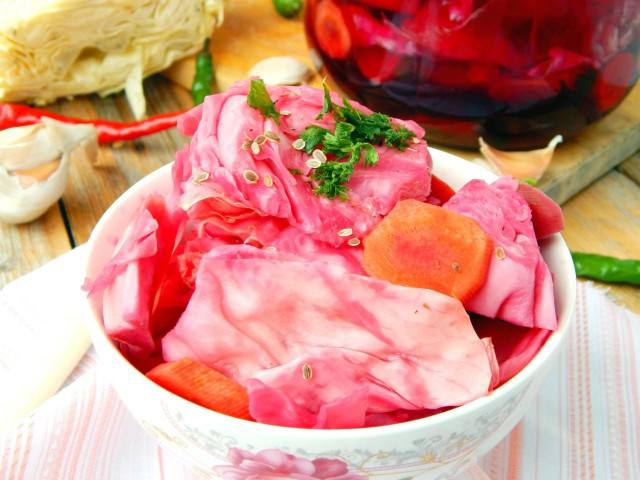Composition / ingredients
Step-by-step cooking
Step 1:

To prepare sauerkraut in liter cans, you need to take the following ingredients: white ripe cabbage (ripeness and variety have a big role, winter cabbage varieties are usually taken for pickling, which have strength and sufficient sweetness, such cabbage will not become soft with proper observance of salting technology), carrots, peppers, salt and sugar. You will also need water to prepare the brine.
Step 2:
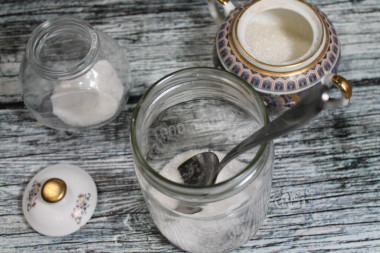
First, prepare the brine itself. Take boiled water - not necessarily boiling water, you can just cold boiled water, you can slightly warm - while you chop cabbage, it will cool down. The main thing is to make the brine in advance so that the salt and sugar completely dissolve in the water. To prepare a liter of cabbage, on average, you will need a third to a quarter of a liter of brine. Calculation for 400 ml. Throw salt into the jar,
Step 3:
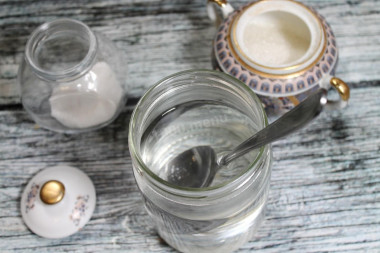
Better large-crystal, not iodized. Add sugar, pour in water and mix until completely dissolved. Set aside the brine and deal directly with the cabbage.
Step 4:
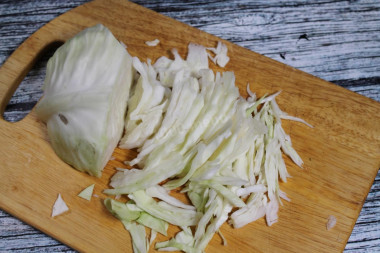
Chop the cabbage with thin ribbons using a special grater or a sharp knife.
Step 5:
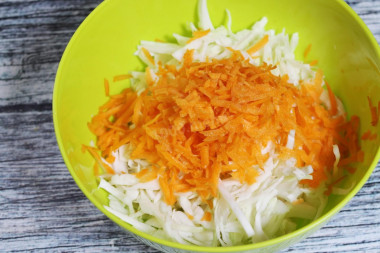
Fold into a large container - a basin, a bowl. Add the carrots grated on a coarse grater.
Step 6:
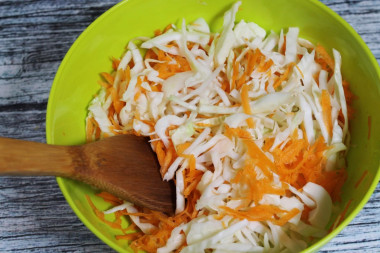
Stir the cabbage, but do not think that it will release the juice in advance in this case it is not necessary at all. Just mix with a spatula so that the carrots are evenly distributed over the entire volume of cabbage.
Step 7:

Take a clean glass liter jar and start filling the cabbage with it. Having filled one-third, throw a few peas of pepper. Flatten the cabbage, but do not trample it too tightly, so that air remains in it. Fill again for another third, toss the peppers again.
Step 8:

Fill the jar to the top. put the peas of pepper again and pour in the brine.
Step 9:

Put the jar of cabbage in a bowl or plate and leave it in the room, covered with a lid, without twisting. You can just put the lid on top. It is necessary to pierce the cabbage from time to time with a wooden skewer so that the air formed during fermentation comes out. I kept cabbage on the windowsill in the kitchen for 4 days. The resulting brine must be returned to the jar again.
Step 10:
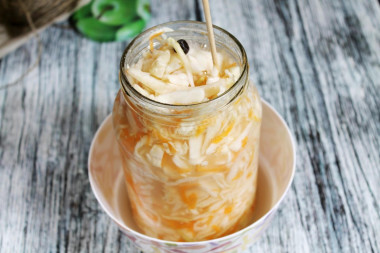
When the gas stops being released - fermentation has stopped, top up the brine to the neck, close tightly and put it in the cold for storage. I still don't twist it too much, you can close it with a nylon lid or sterilize the cabbage in a jar if there is nowhere to store it.
If desired, the proportions of the brine can be changed.
How to calculate the number of cans, why banks explode and how to avoid it, as well as secrets and life hacks, read the article about preparations for the winter.
For cooking, it is better to use filtered or bottled water that is neutral to taste. If you use tap water, keep in mind that it can give the dish an unpleasant characteristic taste.
Calorie content of the products possible in the composition of the dish
- Carrots - 33 kcal/100g
- Dried carrots - 275 kcal/100g
- Boiled carrots - 25 kcal/100g
- Granulated sugar - 398 kcal/100g
- Sugar - 398 kcal/100g
- Salt - 0 kcal/100g
- Water - 0 kcal/100g
- White cabbage - 28 kcal/100g
- Boiled white cabbage - 21 kcal/100g
- Allspice - 263 kcal/100g

